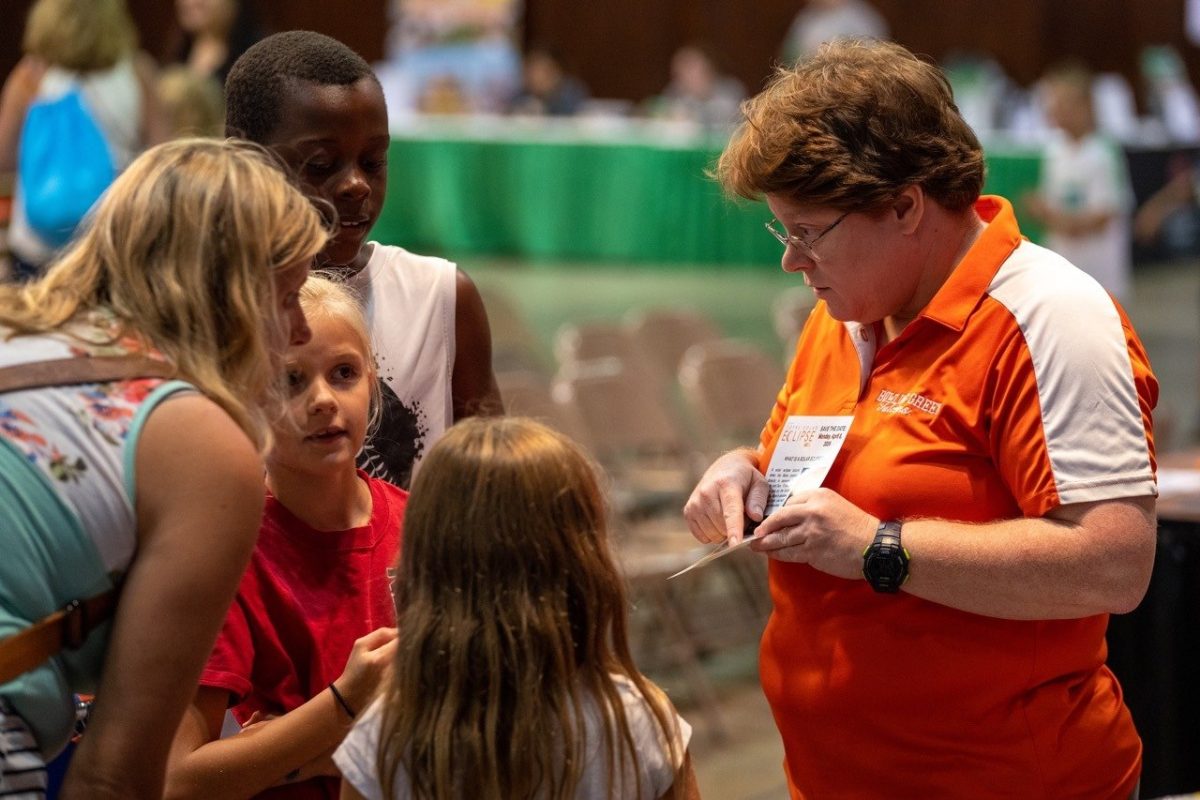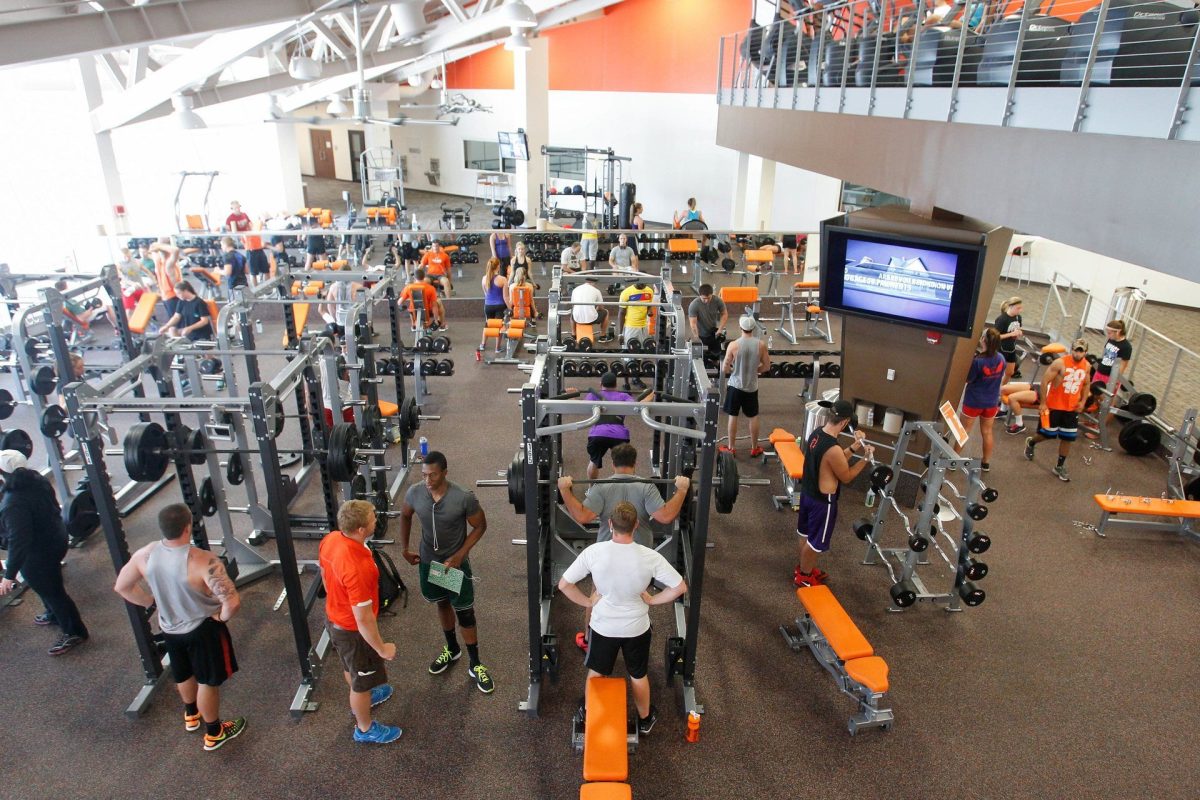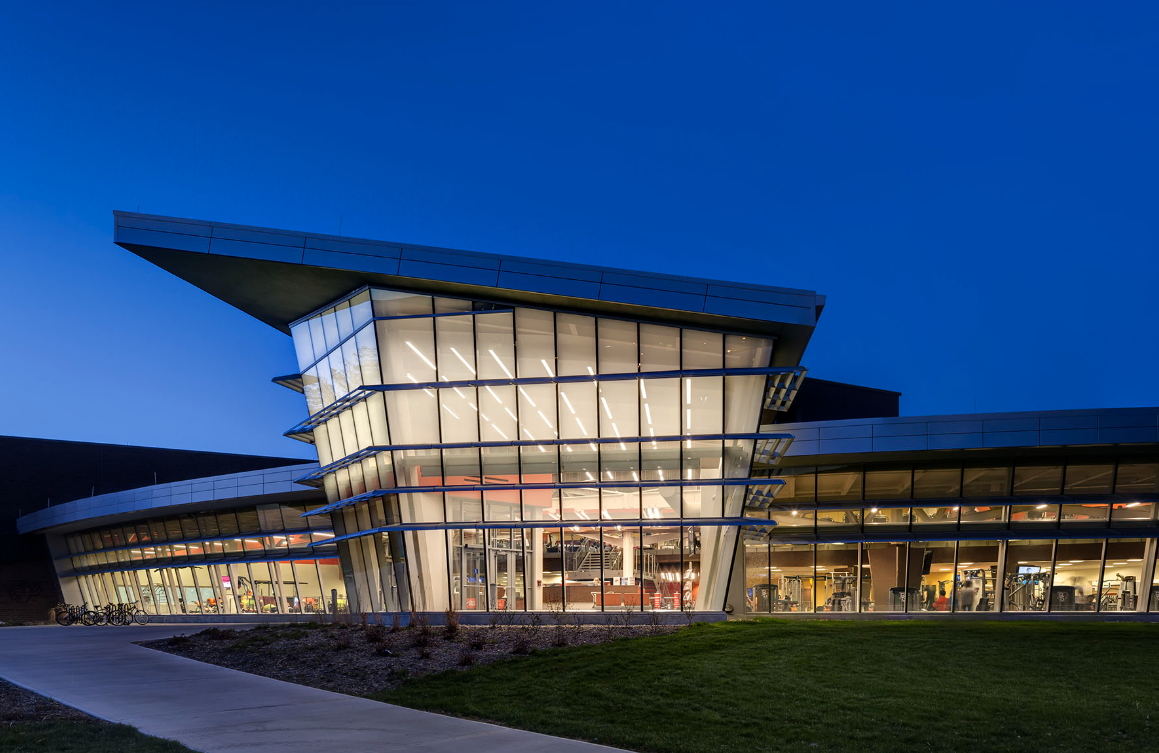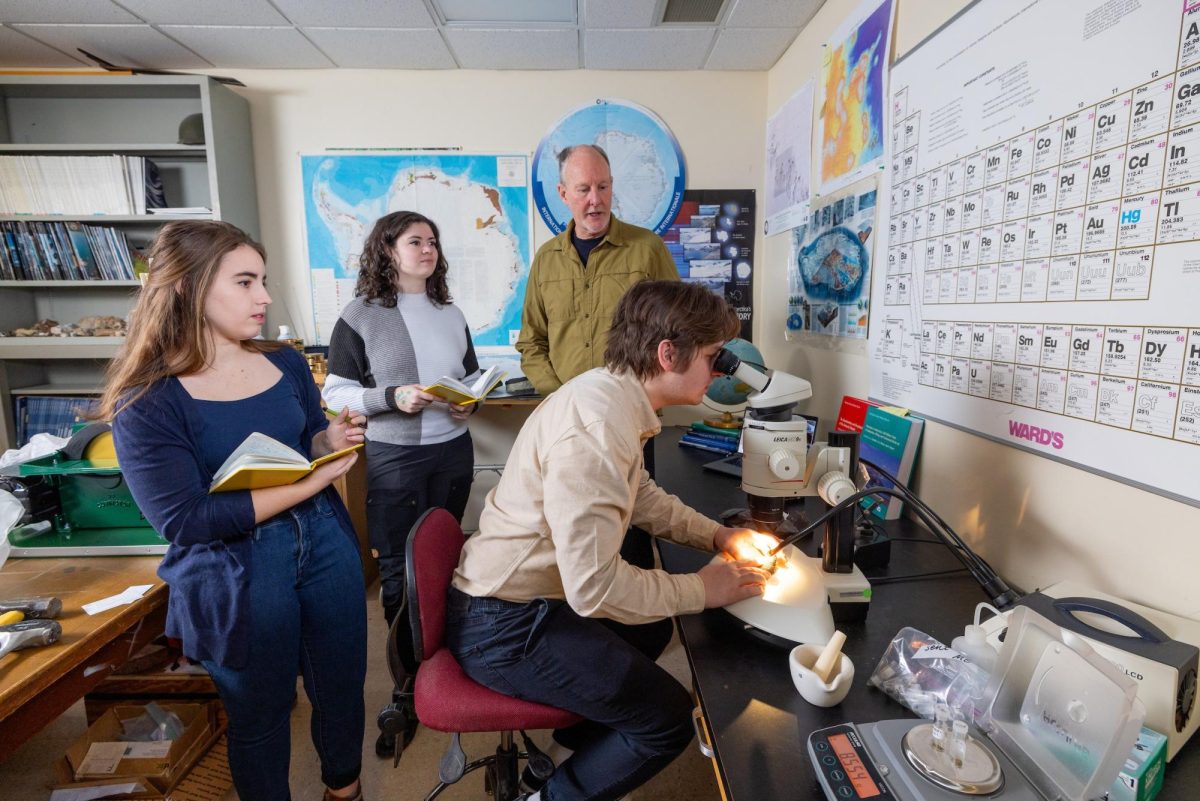From the front lobby to the office where Jacob Raderer works, everything is new, giving the new Falcon Heights sort of a “hotel-like” feel to it.
“It’s interesting to hear the residents talk about it like it’s more of a hotel,” said Raderer, a hall director who also lives in Falcon Heights. “They seem to really like it.”
The building’s name, Falcon Heights, marks the second time since 1945 it has been used as a type of housing on campus, but in a different way.
The old Falcon Heights was a temporary trailer park on campus consisting of 40 units. The trailers, located where Jerome Library now stands, housed veterans returning to school on the GI Bill, according to a 1946 Key Yearbook.
Come fall 2012, the lobby will hold a piece of the old Falcon Heights. Sarah Waters, director of Residence Life, and Raderer plan to hang either a large photo or plaque describing the history of Falcon Heights and how the new hall got its old name.
“It’s nice to see the starting point,” Waters said.
Trailers lined the field in rows where the old Falcon Heights was located, from about 1945 through the mid-1960s, according to The Key, a University yearbook turned magazine.
“I’m fortunate enough to have lived in this Falcon Heights,” Raderer said. “I can’t imagine what it would be like to live in one of those trailers, but I guess it was the best solution at the time.”
The sense of history the name brings to campus is what makes Falcon Heights special, Raderer said.
“There’s sort of a historical tinge to it,” Raderer said about the two Falcon Heights locations. “It’s cool that we’ve been able to maintain that.”
The new Falcon Heights, a residence hall on campus, is a little bit different than the Falcon Heights that once stood where Jerome Library now stands.
While the new residence hall pulls in an income primarily from its student residents, the old trailer park pulled in revenue from a single Coca-Cola vending machine, according to a 1946 BG News article.
Like the new residence hall, the old trailer park was headed by a council of students who helped to manage the revenue and activities within the “community.”
While the old trailer park may have been like its own community, the council in the new residence hall has been trying to keep that sense of community in a hall where some students have the luxury of having their own bedrooms and bathrooms.
“The hall council is very active over there,” Waters said. “Its definitely got a good sense of community.
Despite being named after a former trailer park, the new Falcon Heights has a few more amenities than its trailer predecessors of the 1940s.
Rather than one, the new Falcon Heights has multiple vending machines, as opposed to a single Coca-Cola machine in the former trailer park.
The new building also has more than 300 bathrooms, whereas the original Falcon Heights had no running water. It has multiple rooms, while a Falcon Heights trailer had one main room, Waters said.
Although population didn’t triple at the start of the 2011 school year, it did welcome in one of the largest freshman classes on record and along with it, a new Falcon Heights.
With its “hotel-like” feel, the new Falcon Heights may be a lot different from the old one, but the idea to name it came about when students started pushing for it back in summer 2010, Waters said.
“The difference in complexity of the two is just an interesting juxtaposition,” Waters said. “It was about resurrecting that name and bringing it back.”
When pushing for the name, students also didn’t realize a similarity between the two Falcon Heights. Similar to recent enrollment, in 1945 housing opened up to an increased student population, according to a 1946 Key Yearbook.
Such a similarity is another reason why the University was “reclaiming something from the past” in bringing back the name Falcon Heights, Waters said.
While the old Falcon Heights welcomed students with an open field rather than a new lobby, the new Falcon Heights does so with a fireplace and a balcony area, right outside of Raderer’s office.
“It’s funny, I don’t know if many students know, but this building has something more than just its hotel-like qualities,” Raderer said. “It’s got history.”













